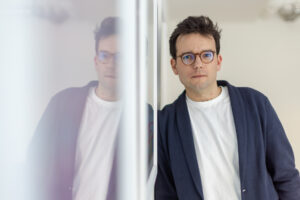Maximizing Project Success with User Stories, Acceptance Criteria, and Outstaffing Company Integration

<?xml encoding=”utf-8″ ?????????>
In the realm of project management, the strategic use of user stories and acceptance criteria is paramount for success. These tools provide a framework for effective communication, collaboration, and the ultimate delivery of a product that meets user expectations.
In this article, we will delve into the significance of user stories and acceptance criteria, exploring how an outstaffing company can play a pivotal role in optimizing project outcomes.
Understanding User Stories
User stories are concise, user-centric descriptions of a feature or functionality that capture the “who,” “what,” and “why” of a requirement. They serve as a means of communication between product owners, developers, and other stakeholders, focusing on the needs and experiences of end-users.
In agile methodologies, user stories are integral to breaking down complex projects into manageable tasks. Each user story encapsulates a specific functionality from the user’s perspective, fostering a shared understanding among team members about the desired outcome. This approach enhances flexibility and adaptability, allowing teams to respond promptly to changing requirements.
The Role of Acceptance Criteria
While user stories define the scope and context of a feature, acceptance criteria set the parameters for its successful implementation. Acceptance criteria outline the conditions that must be met for a user story to be considered complete and ready for delivery. They act as a checklist against which the development team and stakeholders can assess the functionality’s correctness and completeness.
Well-defined acceptance criteria provide clarity, leaving no room for ambiguity or misinterpretation. They serve as a foundation for quality assurance, ensuring that the developed product aligns precisely with the envisioned outcomes. This meticulous approach contributes to a smoother development process and minimizes the risk of misunderstandings between different project stakeholders.
Leveraging User Stories and Acceptance Criteria in Project Management
Enhanced Collaboration: User stories and acceptance criteria promote collaboration by offering a shared language for project discussions. This fosters a collaborative environment where team members, regardless of their roles, can actively contribute to project discussions and decision-making processes.
Iterative Development: Agile methodologies emphasize iterative development, and user stories are instrumental in facilitating this approach. By breaking down the project into manageable user stories, development occurs in short cycles, allowing for continuous feedback and adjustments as needed.
Client-Centric Focus: User stories keep the end-user at the forefront of the development process. This client-centric focus ensures that the delivered product aligns with user expectations, leading to higher satisfaction and increased chances of project success.
Quality Assurance: Acceptance criteria serve as a benchmark for quality assurance, guiding the testing process. By having well-defined criteria, the testing team can systematically verify that each aspect of a feature functions as intended, contributing to a more robust and reliable end product.
Adaptability to Change: The dynamic nature of user stories and acceptance criteria allows for flexibility in responding to changing project requirements. As new insights emerge or priorities shift, the project team can easily adapt by adjusting user stories and criteria accordingly.
The Impact of an Outstaffing Company
Enter the outstaffing company, a strategic partner that can significantly influence the success of a project. An outstaffing company provides specialized talent to augment a project team, offering flexibility and scalability in resource management. Let’s explore how the incorporation of an outstaffing company aligns with the principles of user stories and acceptance criteria.
Specialized Expertise: An outstaffing company brings a pool of specialized talent to the table. When a specific user story demands expertise that may not be available in-house, an outstaffing company can provide the required skills, ensuring that the acceptance criteria are met with precision.
Agile Team Scaling: User stories often come with varying levels of complexity. An outstaffing company allows for agile team scaling, enabling the project to quickly adapt to changing requirements. Whether it’s a need for additional developers or quality assurance professionals, the outstaffing model facilitates seamless integration.
Efficient Resource Allocation: With user stories and acceptance criteria guiding the project’s direction, an outstaffing company can strategically allocate resources where they are most needed. This ensures that each aspect of the project receives the attention and expertise required for successful implementation.
Diverse Perspectives: User stories benefit from diverse perspectives, and an outstaffing company injects fresh viewpoints into the project. This diversity enhances problem-solving capabilities, fosters creativity, and contributes to a more comprehensive understanding of user needs.
Accelerated Development Cycles: The flexibility offered by an outstaffing company accelerates development cycles. Whether it’s addressing a sudden surge in project demands or navigating tight deadlines, the additional resources provided by the outstaffing model can help meet project milestones efficiently.
Case Studies: Maximizing Project Success with User Stories, Acceptance Criteria, and Outstaffing Companies
Case Study 1: Tech Innovations Corp.
Tech Innovations Corp., a leading technology firm, faced a critical project with intricate user requirements. By employing a robust user story and acceptance criteria framework, they ensured that every feature aligned with user expectations. Recognizing the need for additional expertise in certain areas, they seamlessly integrated professionals from an outstaffing company. This collaborative approach not only met project milestones but also exceeded client expectations, setting a benchmark for future endeavors.
Case Study 2: Market Dynamics Solutions
Market Dynamics Solutions, a market research company, leveraged user stories and acceptance criteria to streamline their project management process. To enhance their capabilities, they engaged an outstaffing company to tap into specialized skills for data analysis. The result was a comprehensive market report that not only met but surpassed client expectations, solidifying their reputation as a go-to solution provider in the industry.
Wrap Up
In the intricate dance of project management, the harmony between user stories, acceptance criteria, and the support of an outstaffing company can be the key to success. User stories provide a narrative that guides development, while acceptance criteria set the standards for quality assurance. When an outstaffing company is seamlessly integrated, it brings specialized expertise and scalability, ensuring that the project aligns with user expectations and industry standards.
As organizations navigate the ever-evolving landscape of project management, the strategic use of user stories and acceptance criteria, complemented by the support of an outstaffing company, can create a powerful synergy. This synergy optimizes resource utilization, accelerates development cycles, and ultimately contributes to the successful delivery of projects that stand out in a competitive market.




